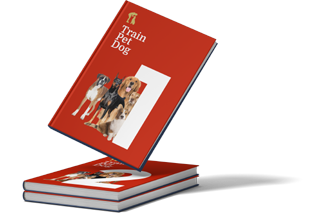Privacy Policy: Your email address is 100% safe.
We don't spam and hate it as much as you do 🙂 You can also unsubscribe from our mailing list at any time.

How to Stop Your Dog from Barking?

Dogs bark from time to time. That is perfectly normal and natural since barking is a method of expressing themselves. Their barking can be similar to children making noise when they play outside. It can also be a warning or greeting when someone comes to the door or something is wrong. But, if your dog barks continually or for long periods of time, there must be a specific cause or reason.
If, every time you put your dog out, he starts barking and won’t stop, be prepared to hear complaints from your neighbors. If your dog barks the whole time you are away from home, you will certainly hear from your neighbors. Excessive barking can even result in complaints to the police . . . and citations and fines for you.
Learn what triggers your dog’s barking and how to control the barking by Subscribing to Our Dog Training Mini Course. Understanding the causes will help you change the circumstances.
Dogs are generally intelligent and understand what you want them to do if you are consistent in training. Many dogs are quick learners who only need to be told once or twice while others are more stubborn or less quick to understand. However, their behavior towards outsiders varies according to their breed, their lineage within that breed, and their socialization.
Many dogs are naturally friendly and outgoing and may only bark at newcomers as a way of greeting and asking for attention. Others are more shy and aloof and will bark because they are afraid. Some dogs are very possessive of their homes and owners or are wary of strangers or are of a breed that guards their owners so they will bark as a means of warning before they become aggressive.
No matter which type of dog you have, early socialization and training will make a huge difference in his approach to strangers. Dog Training Mini Course to learn how to ensure that his barking is not ferocious, excessive or overly loud.
Dog Lovers Training Course

Regular Price: $97.
Discount of: $30.
Current Price: $67 only.
Normal Sounds Dogs Make to Communicate . . .
Dogs use their voices in a variety of ways to communicate. As puppies, they make grunting noises to communicate with littermates and mother. High-pitched crying signals that they are frustrated, afraid, or hurting. Soft whining or whimpering is their way of saying they are hungry or cold. Puppies use continual yelping or high-pitched barking to get your attention at such times as when they are shut in a crate and want out. A single yelp or bark is normal if they get stepped on, stung by a bee, or startled.
As your dog gets older, he will use other forms of vocal communication:
Whining is useful in getting an owner’s attention. It is also used to show submissiveness to other dogs.
Whimpering is not often used by adult dogs unless they are abused, cold, hurt, or very frustrated or afraid.
Howling or baying is used by some breeds to communicate over long distances. Dogs that are used in hunting often bay to signal each other that they are following the scent of the prey. When not hunting, these same dogs will respond to sirens or certain music by howling or baying.
Growling is often associated with aggression, dominance, and possessiveness. Defense and warning are the correct meanings of the growling if the dog shows a stationary posture, does not wag his tail, and curls his lip. However, growling can mean the dog wants to play if it is accompanied by tail wagging, lots of movement, and even the bringing of a toy.
Barking is normal if the dog is a watch dog. This is his way of telling his owner that something is different. The bark may sound different depending upon how the dog interprets the “different-ness” – if someone he knows and likes is coming, he may have a happy bark whereas if someone he doesn’t know or doesn’t like is coming, he may have a warning bark.
Barking is also used to get attention or show excitement or signify loneliness.
Does Your Dog Bark Too Much?
Some barking is tolerable as it is expected of any dog. However, excessive barking causes problems. Continual barking or barking for periods of time throughout the day and night disturbs both the owner and his neighbors. After a while it becomes stressful as well as annoying.
Excessive barking is most often caused by nervousness, separation anxiety, fear or distress. As the dog becomes more upset, lonely or anxious, his barking becomes more insistent and louder. Putting your dog outside alone, putting him in his kennel/cage, or leaving him home alone may make him feel he is being abandoned. He is afraid you will never return. This triggers his barking.
Subscribe to our Dog Training Mini Course to better understand what triggers your dog’s barking and how to keep your dog calmer in those situations.
Are You Guilty of Providing a Boring Environment To Your Dog?
Young dogs use their extra energy to play hard and often. They love excitement and activity. A boring environment that offers no stimulation often creates a bored barker who uses barking as a means of releasing excess energy.
If your dog is left alone for long periods of time, he is likely to resort to barking whenever (and for however long) he is left alone. This becomes such a habit that he will begin barking the minute you walk away and not stop until he hears your footsteps returning.
If nobody is home during the day, your dog will be anxious to get attention. He will bark any time he thinks anyone is closeby and he will become quite insistent and loud. Barking in these situations becomes a hobby.
Giving your dog activities that occupy his mind and body will help him use his energy and his problem solving skills. This will create a dog who is content to lie quietly or sleep when he has to be alone.
Dogs enjoy hide and seek, fetch, and other activities. However, the excitement of playing games may bring on bouts of “excited barking.”
Follow the step-by-step instructions from our Mini Course to understand and control excessive dog barking. Just enter your name and email ID and we will start sending you the mini course through email – straight to your Inbox.
10 Tips To Keep Your Dog’s Barking Under Control
Here are 10 Tips for Controlling Your Dog’s Barking from the course:
Start socializing and training your dog as soon as you get him. Younger dogs are easier to train than older dogs.
Teach your dog to bark on command. Use the word ‘speak’ or ‘talk” whenever he barks. He will soon learn to associate that word with barking and will have a time he is permitted to bark.
Train your dog to follow commands like ‘stop’ or ‘quiet.’ Whenever your dog barks out of control, use ‘stop’ or ‘quiet’ in a firm voice.
When your dog quits barking when he is told ‘stop’ or ‘quiet’, give him a small treat as a reward. This can be used whether he is in the yard, in a cage, looking out a window, or running to the door.
If you cannot get your dog’s attention to tell him to stop barking, try making a loud, sudden noise by slamming a book on a table or shaking a can of rocks or marbles.
Train your dog to stay home alone without barking. Try leaving him for a few minutes at a time. Do not go out of earshot the first few times. If he barks, go back and tell him ‘stop’ or ‘quiet.’ If he stays quiet, praise him when you return. Gradually lengthen the amount of time you are gone. Then lengthen the distance you go.
Try leaving the TV or radio on when you are away from home. This will give your dog the idea that someone is there.
Get your dog plenty of exercise – play games with him and take him for walks. New smells and sights and plenty of running and jumping will keep him from being bored. If you play with him and walk him at specific times each day, he will look forward to those times which will make him more compliant at other times.
If looking out a window or door stimulates him to bark, cover the window or door or limit his access.
Teach your dog new things. Obedience training in a group setting helps your dog to learn to concentrate on what you are saying and obey you. Agility training is fun and tiring for many dogs. Learning tricks is a great way for your dog to show off and get attention.
Remember: You do not want to eliminate barking completely as that is the main way your dog has of communicating with you and with other dogs. Learn to use positive training methods through the membership site to learn to control your dog’s barking.
Get access to the Dog Training Mini Course to learn more on Dog barking.

Mini-Course on Dog Training
Subscribe to this FREE Mini Course and Learn New and Advanced Dog Training Tips to Control your Dog or Puppy's Bad habits.
Get the first email to your Inbox in the next 3 minutes and train your dog in the comfort of your own home! You will start seeing results in the next 6 days.
Just fill in your details below and get started...
